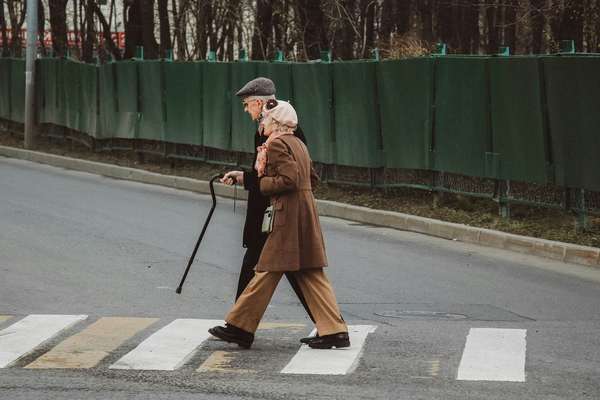
After five years of protection from rising interest rates, the safety net is lifting for hundreds of thousands of Australian pensioners.
Starting 20 September 2025, deeming rates will increase for the first time since the pandemic began, potentially reducing pension payments for those who can least afford it.
In this article
Social Services Minister Tanya Plibersek has announced that deeming rates will 'gradually return to pre-pandemic settings' to 'reflect rates of return that pensioners and other payment recipients can reasonably access on their investments.'
The changes will hit hard and fast. The lower deeming rate will jump from 0.25% to 0.75% on 20 September, while the upper rate will rise to 2.75% for assets above the threshold. It's the first increase in what the government signals will be a series of phased changes to bring rates back in line with current economic conditions.
Who's Actually Affected?
More than 900,000 people who receive government welfare and have income from other sources are affected by deeming rates. This isn't just about age pensioners - though they make up the largest group.
The breakdown includes about 460,000 aged pensioners, 143,000 on JobSeeker payments and 120,000 on parenting payments.
If you're receiving any of these payments and have financial assets like bank accounts, shares, or superannuation, these changes could affect your fortnightly payment.
'Now is not the time to remove the freeze and revert to the previous method for deeming rates'
The Financial Reality Check
Currently, the first $64,200 of your financial assets is deemed to earn 0.25%, with anything over $64,200 deemed to earn 2.25% if you're single. For couples, it's 0.25% on the first $106,200 combined, and 2.25% on amounts above that threshold.
From 20 September, these rates will jump to 0.75% and 2.75% respectively. While that might not sound dramatic, the cumulative effect on your pension could be substantial.
National Seniors Australia has crunched the numbers and the results are sobering. In a worst-case scenario, homeowner couples could lose up to $285 per fortnight, while singles could see reductions of up to $203 per fortnight, depending on their individual circumstances.
Understanding Deeming: The Basics You Need to Know
If deeming rates sound like bureaucratic jargon, here's the plain English explanation: instead of tracking exactly how much income you earn from your savings, investments, and superannuation, Centrelink uses a standardised formula.
Deeming assumes your financial assets earn a set rate of income, no matter what they really earn. This system was designed to keep things fair and predictable - preventing your pension from jumping around based on market performance.
What Assets Are 'Deemed'?
Bank accounts and term deposits
Shares and managed funds
Superannuation (once you reach pension age)
Government bonds and debentures
Not included: Your family home, car, caravan, household contents, or investment properties
A Five-Year Financial Shield Comes Down
Deeming rates have been frozen at 0.25% and 2.25% since 2020, when the Morrison government recognised that retirees needed protection during uncertain economic times. That freeze continued through interest rate rises that saw the Reserve Bank cash rate climb from near zero to over 4%.
The pandemic cuts and subsequent freezing have saved social security recipients $1.8 billion, according to government figures. For many pensioners, this meant their payments remained stable even as the cost of living soared.
But that protection is ending. As inflation begins to ease, the government believes it's time to 'gradually return deeming rates to pre-pandemic settings' to reflect what pensioners can reasonably earn on their investments.
What This Means in Your Pocket
Let's work through a real example. Meet Margaret, a single pensioner with $150,000 in financial assets - a fairly typical situation for someone on a part pension.
Under current rules:
• First $64,200 deemed at 0.25% = $160.50 annually
• Remaining $85,800 deemed at 2.25% = $1,930.50 annually
• Total deemed income = $2,091 annually ($80.42 per fortnight)
From September:
• First $64,200 deemed at 0.75% = $481.50 annually
• Remaining $85,800 deemed at 2.75% = $2,359.50 annually
• Total deemed income = $2,841 annually ($109.27 per fortnight)
The difference? An extra $28.85 per fortnight in deemed income, which could reduce Margaret's pension by about $14.43 per fortnight under current income test rules.
Source: 9 News Australia / Youtube.
Control Shifts to Independent Expert
Perhaps the most significant long-term change is institutional. The Australian Government Actuary will recommend deeming rates moving forward, though the social services minister will retain final say and could still make adjustments during exceptional circumstances.
This move towards independent expert advice could provide more predictability and remove some political considerations from rate-setting.
However, it also means future changes may be more closely aligned with market conditions rather than cost-of-living pressures.
Your Action Plan for September
Check if you're assessed under the income test or assets test (use online calculators)
Calculate your current deemed income using official tools
Consider whether restructuring investments could help
Contact Centrelink if you're unsure about your situation
Monitor future announcements about further rate changes
Preparing for Change
While you can't stop these increases, you're not powerless. Here are strategies worth considering:
• Review Your Assessment Method
• Consider Investment Structure
• Use Available Tools
Did you know?
If your investments earn more than the deeming rates, you keep the extra without it affecting your pension. This means higher-performing investments could actually benefit you more now that deeming rates are rising - as long as you stay within pension eligibility limits.
Getting Help When You Need It
You can call the Centrelink older Australians line and speak to a Financial Information Service Officer if you need help understanding how these changes affect you. The phone line: 132 300 (8am to 5pm, Monday to Friday).
For complex situations, consider speaking with a financial advisor who specialises in retirement income and understands how Centrelink rules interact with investment strategies.
Looking Ahead: More Changes Coming
September's increase won't be the last. The Social Services Minister has indicated this will be the first of a series of phased increases in the deeming rate.
The pace and size of future changes will depend on economic conditions and the new advisory role of the Australian Government Actuary.
The Bigger Picture
'Deeming rates have been frozen for three years, sparing people lower pension payments as interest rates have soared,' says National Seniors Australia CEO Chris Grice. 'NSA wants the government to continue the freeze on deeming until interest rates ease further.'
The organisation argues this is about more than just numbers on a page. 'It's a sensible way to help older people meet daily living costs. Any change to deeming rates should be introduced in a measured, incremental, and transparent way.'
While the government maintains these changes reflect a return to more normal economic conditions, the timing during ongoing cost-of-living pressures has sparked debate about priorities and fairness.
If you're on the full Age Pension with minimal financial assets, these changes likely won't affect you. However, if you receive a part pension or have significant savings while still qualifying for government support, it's time to understand your position and consider your options before September.
The September increase marks the end of an unprecedented period of protection for Australian pensioners.
While the government frames this as a return to normal, for hundreds of thousands of recipients, it represents a new financial reality that will require careful planning and, for some, difficult adjustments.
Read more: Better Late Than Never? Why Delaying Your Age Pension Claim Could Cost You Thousands
Original article: Centrelink blow for 460,000 pensioners as major change to deeming rates announced
The September increase marks the end of an unprecedented period of protection for Australian pensioners. While the government frames this as a return to normal, for hundreds of thousands of recipients, it represents a new financial reality.
https://au.finance.yahoo.com/news/c...tes-announced-gradually-return-223915725.html
Services Australia – Deeming and Age Pension
'The lower deeming rate will jump from 0.25% to 0.75% on 20 September … the upper rate will rise to 2.75% for assets above the threshold.'
https://www.servicesaustralia.gov.au/deeming?context=22526
National Seniors Australia – How the Federal Budget affects you
'In a worst-case scenario, homeowner couples could lose up to $285 per fortnight, while singles could see reductions of up to $203 per fortnight.'
https://nationalseniors.com.au/news/featured-news/how-the-federal-budget-affects-you
National Seniors Australia – Will a deeming rate change cost you?
'Deeming assumes your financial assets earn a set rate of income, no matter what they really earn.'
https://nationalseniors.com.au/advo...t-income-system/deeming-rates-freeze-one-july
What are your thoughts on these deeming rate changes? Have you checked how they might affect your pension payments? Share your experience or questions in the comments below!








